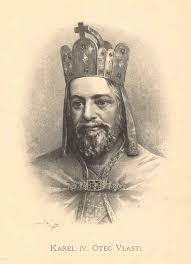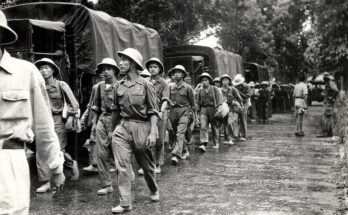The Hundred Years’ War stands as one of the most fascinating and turbulent chapters in European history. Spanning over a century, this epic struggle between England and France shaped the political, social, and cultural landscapes of both nations. But what was it really about? Let’s dive into the drama, intrigue, and monumental battles that defined this legendary conflict.
What Sparked the Hundred Years’ War?

It all began with a dispute over the French crown. When Charles IV of France died in 1328 without a male heir, a succession crisis erupted. Edward III of England, the nephew of Charles IV, claimed the throne through his mother, Isabella of France. However, the French crown went to Philip VI, sparking animosity that would eventually ignite into full-scale war.
The Key Players: England and France
England’s Ambitions
England sought to secure its lands in France, particularly the duchy of Aquitaine. But Edward III’s ambitions went beyond mere territorial disputes. His claim to the French throne added a dynastic element to the conflict, elevating it from a regional squabble to a battle for supremacy.
France’s Resolve
France, on the other hand, was determined to protect its sovereignty and expel the English from its territories. Philip VI and his successors faced the daunting task of defending their land while managing internal dissent and regional power struggles.
A War in Phases
The Hundred Years’ War wasn’t a continuous conflict but a series of wars interspersed with uneasy truces. Historians generally divide the war into three main phases:
1. The Edwardian Phase (1337-1360)
Marked by English victories like the Battle of Crécy and the capture of Calais, this phase saw the rise of the English longbow as a game-changing weapon.
2. The Caroline Phase (1369-1389)
This period witnessed a French resurgence under Charles V, who reclaimed much of the lost territory. The English, plagued by internal strife and economic woes, struggled to maintain their gains.
3. The Lancastrian Phase (1415-1453)
The war’s final phase included the legendary Battle of Agincourt and the rise of Joan of Arc, whose leadership inspired the French to ultimate victory.
Iconic Battles That Shaped the War
The Battle of Crécy (1346)
Imagine a battlefield where heavily armored French knights charged headlong into a hail of English arrows. This clash demonstrated the effectiveness of the longbow and marked a shift in medieval warfare.
The Battle of Poitiers (1356)
Edward, the Black Prince, captured the French King John II in this dramatic encounter. The ransom demanded for the king’s release crippled France financially.
The Battle of Agincourt (1415)
Henry V’s stunning victory at Agincourt became legendary, immortalized by Shakespeare in Henry V. Against overwhelming odds, English archers decimated the French forces, solidifying Henry’s reputation as a brilliant tactician.
Joan of Arc: The Maid of Orléans
No discussion of the Hundred Years’ War is complete without mentioning Joan of Arc. A peasant girl with divine visions, Joan rallied French forces and lifted the siege of Orléans in 1429. Her capture and execution by the English in 1431 only strengthened her legacy as a symbol of French resilience and faith.
The Role of Chivalry
The war was as much about knights and honor as it was about territorial disputes. Chivalry played a significant role, influencing the conduct of warfare and the treatment of prisoners. However, as the conflict dragged on, the brutal realities of war often overshadowed these ideals.
The Impact on Society
England
The war drained England’s resources but also spurred the development of a strong national identity. The loss of continental territories shifted England’s focus inward, setting the stage for the Wars of the Roses.
France
For France, the war was a devastating ordeal, with much of its countryside ravaged. Yet, it also strengthened the monarchy and fostered a sense of national unity that would define the nation’s future.
Innovations in Warfare
The Hundred Years’ War saw significant advancements in military technology and strategy. The longbow, gunpowder, and improved fortifications transformed medieval combat, paving the way for modern warfare.
The Treaty of Brétigny (1360)
This agreement marked a temporary halt to hostilities, granting England significant territorial gains. However, it was ultimately a fragile peace, as underlying tensions remained unresolved.
The Role of Women
Women played crucial roles during the war, from Joan of Arc’s leadership to the countless women who managed estates and supported armies in their husbands’ absence. Their contributions, often overlooked, were vital to the war effort.
Economic Consequences
The war’s economic toll was immense. Trade routes were disrupted, taxes increased, and both nations faced significant financial strain. However, the conflict also spurred economic innovations, such as improved taxation systems and the rise of banking.
Cultural and Artistic Reflections
The Hundred Years’ War inspired countless works of art and literature. Chronicles, ballads, and illuminated manuscripts preserved the stories of battles and heroes, ensuring the war’s legacy endured.
The End of the War
The conflict officially ended with the Treaty of Picquigny in 1475, though most historians consider the French victory at Castillon in 1453 as the war’s true conclusion. By then, England had lost nearly all its continental possessions, save for Calais.
Lessons from the Hundred Years’ War
This protracted conflict offers timeless lessons about perseverance, leadership, and the human cost of war. It reminds us that even amidst chaos, individuals like Joan of Arc can inspire hope and change the course of history.
Check: The Fascinating Story of Abelard and Heloise: Medieval France’s Star-Crossed Lovers
Conclusion
The Hundred Years’ War was far more than a dynastic dispute; it was a defining moment for England and France. Its legacy continues to captivate historians and enthusiasts alike, offering insights into a world where chivalry clashed with brutality, and dreams of empire collided with the realities of war. The echoes of this monumental struggle still resonate, reminding us of the resilience and ingenuity of the human spirit.
FAQs
1. Why is it called the Hundred Years’ War?
The war lasted for 116 years, from 1337 to 1453. The term “Hundred Years’ War” is a later historical designation that simplifies its lengthy duration.
2. What was the main cause of the war?
The primary cause was a dispute over the French crown, coupled with territorial ambitions and economic rivalry between England and France.
3. How did the war impact ordinary people?
The war brought widespread devastation, especially in France. Villages were destroyed, populations displaced, and taxes increased, making life incredibly difficult for commoners.
4. What role did the longbow play in the war?
The English longbow was a decisive weapon, capable of piercing armor and disrupting enemy formations. It played a crucial role in battles like Crécy and Agincourt.
5. Who won the Hundred Years’ War?
France emerged victorious, regaining most of its territory and solidifying its national identity. England retained Calais until 1558 but shifted its focus toward internal affairs and maritime expansion.


